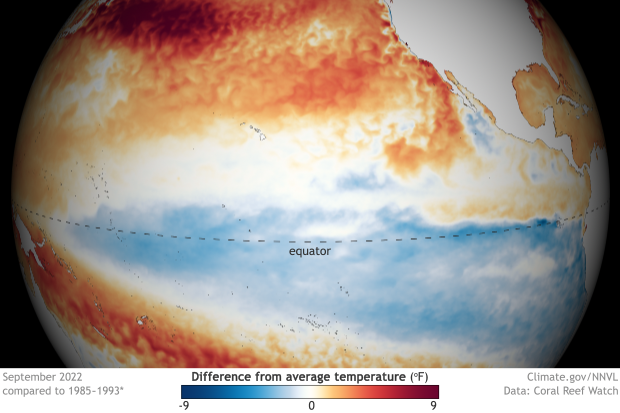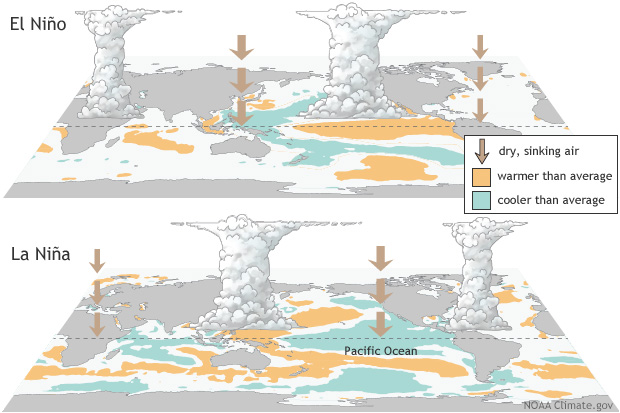About ENSO

Chances are you have heard the term “ENSO” thrown about by TV meteorologists a few times might have wondered what they were talking about. In an acronym-heavy industry, you can quickly get lost when the alphabet soup is served. ENSO is not the name of your favorite Sci-Fi movie character, but is the acronym for a naturally occurring phenomenon located along the equator in the Pacific Ocean called the El Niño-Southern Oscillation.

Scientists pay close attention to sea surface temperatures (SSTs) as there are three ENSO phases: ENSO neutral, El Niño, and La Niña. Each phase requires associated changes in the atmosphere to be a true ENSO event.
- ENSO Neutral - refers to normal SSTs (75-80 degrees Fahrenheit) and is generally associated with fairly normal winter weather patterns across the US. Much of the Midwest is dominated by cold temperatures, while the southern US is warm and wet. Hurricane development is normal during this phase. At times, ocean temperatures may look as if they are an El Niño or La Niña during the neutral phase, but are not coupled with changes in the atmosphere.
- El Niño - is present when SSTs are 0.5-degrees Celsius warmer than normal and causes easterlies (winds from east to west) to weaken and in some cases changes to westerly wind flows along the equator. This contributes to warmer, drier conditions across the northern US, with wet weather in the southern US during the winter. Hurricane development in the Atlantic tends to be lessened, but the development in the Pacific is amplified.
- La Niña - is present when SSTs are 0.5-degrees Celsius cooler than normal and the easterly winds become stronger. These patterns are associated with cold, wet winters across much of the northern US and warmer, drier conditions in the southern US. Hurricane development in the Atlantic is amplified.
Phases swing back and forth every 2-7 years on average and can vary in intensity, which impacts global circulations. El Niño occurs more frequently than La Niña, which usually lasts 9-12 months. La Niña generally lasts 1-3 years. This influences the position of the pacific jet stream, which serves as a large driver of weather across the United States.
While El Niño events have been occurring for thousands of years, they were not studied in depth until the late 20th century. Sea surface temperature data is most often used to represent when the El Niño Southern Oscillation (ENSO) is occurring. For this reason, most ENSO climatologies are based on data from 1950 to present, consistent with when sea surface temperature data are available.